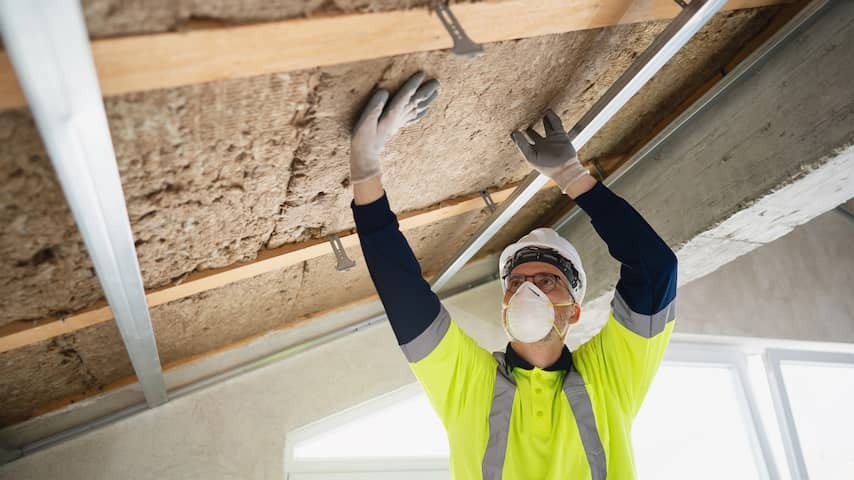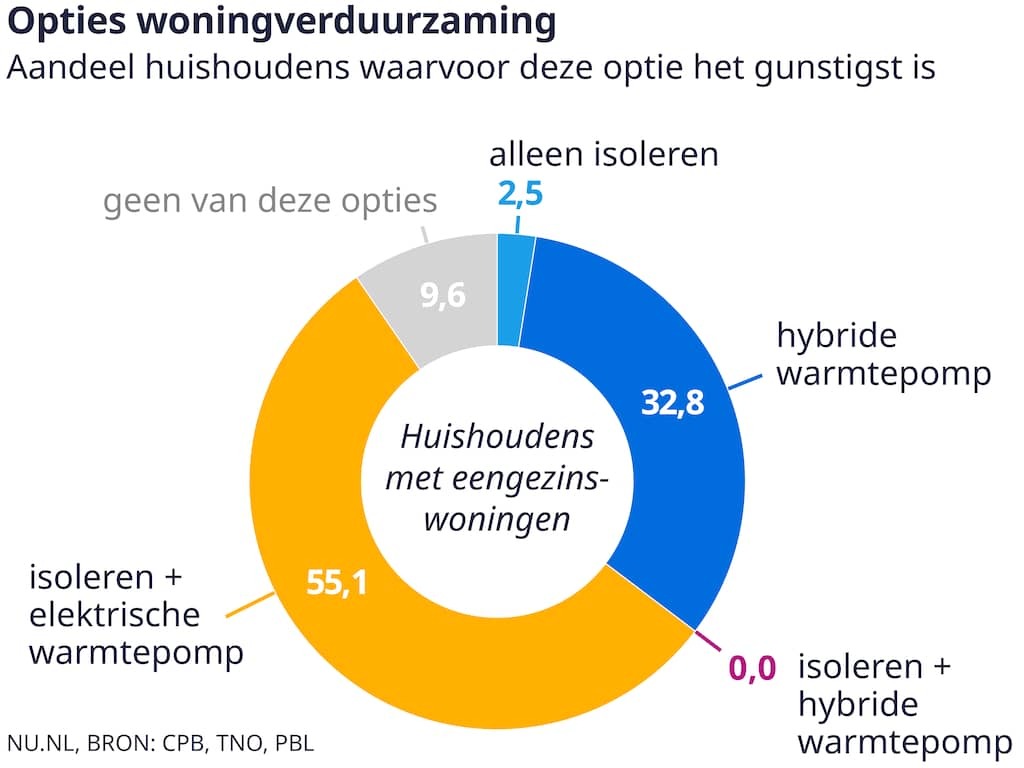
Verduurzamen a single-family home is almost always good for the resident’s wallet. Thanks in part to generous subsidies, it is beneficial for nine out of ten households to switch to a (hybrid) heat pump, whether or not in combination with extra insulation.
Homeowners and private tenants can save an average of over 300 euros per year. Those who rent a corporation house even save more than 700 euros per year if the house is made more sustainable. This is according to a study published by the Central Planning Bureau (CPB) on Wednesday, in collaboration with TNO and the Netherlands Environmental Assessment Agency (PBL).
The research looked at four options for making the five million Dutch single-family homes more sustainable: extensive insulation, insulation in combination with an electric heat pump, insulation with a hybrid heat pump and only installing a hybrid heat pump. Other options, such as switching to a municipal heating network, have not been considered.
In more than half of the cases, the combination of insulating and installing a fully electric heat pump is the most favorable option. In most other cases, a hybrid heat pump is the best option, without also insulating.

Insulation is free for social tenants
According to the researchers, the results are largely determined by government subsidies. These make it cheaper to insulate homes and purchase heat pumps. In addition, it has been agreed that tenants of corporation houses will not face rent increases if their house is insulated. Thanks to this free insulation, switching to an electric heat pump is the most favorable option for the vast majority of social tenants.
If the subsidies are dropped and social tenants are no longer spared in this way, making it more sustainable pays off much less often: in four out of ten cases.
The study assumes that residents make it more sustainable at natural times. For example, they have a heat pump installed when the existing central heating boiler is broken and they apply insulation during a renovation. The researchers assume that homeowners pay for the measures through the mortgage. For private tenants, the investment costs can be passed on in the rent.
Heating networks not investigated
The research only looks at individual households and says nothing about the social costs of sustainability. For example, no account has been taken of the question of whether it would be cheaper in certain neighborhoods to switch to a heating network together. Where that happens, the power grid often does not have to be reinforced. This means that making an entire neighborhood more sustainable can ultimately be cheaper.
Recent research by the PBL showed that a heating network provides the lowest social costs for approximately one in three homes. In many cases, these are apartments, which do not occur in the CPB study. For single-family homes, an own (hybrid) heat pump is often the most favorable.
It is not easy for citizens to read from the new CPB study which form of sustainability pays off the most in their case. However, it appears that the hybrid heat pump more often comes out as the best solution for homes that are larger than 150 square meters. For homes smaller than 110 square meters, the advice is more often to insulate and switch to an electric heat pump.